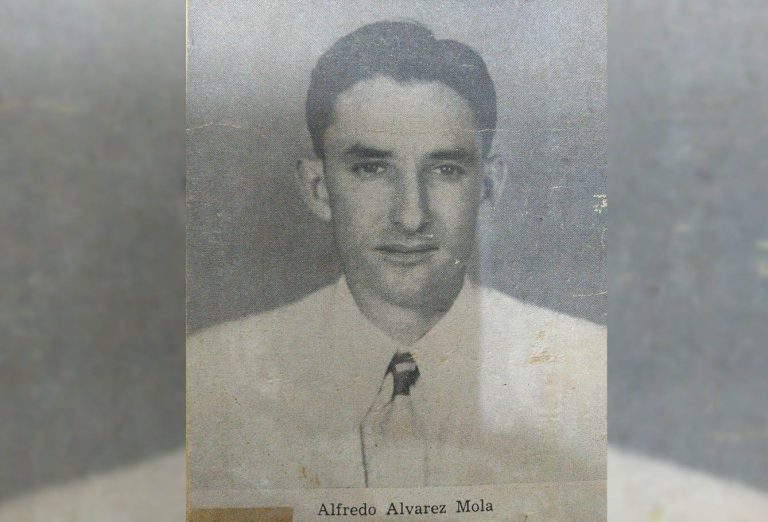Recently, I received a book courtesy of its own author, Alberto Albariño Atiénzar, dedicated to the life of the Camagüey revolutionary Alfredo Álvarez Mola.
As I began to look through it, I remembered a story that my friend Iris Martínez told me, who was a bank worker for almost 30 years and who shared with her husband Bebo, the admiration for Alfredito, as they called their friend and a comrade in the struggle.
Bebo
José Ramón Márquez García (known as Bebo) was a bank worker all his life, from a very young age he got involved with the July 26th Movement in Camagüey in the clandestine cell of Alfredo Álvarez Mola.
After the murder of Alfredito, due to an accusation by a snitch named Basulto, Bebo dedicated himself to always remember him and doing justice to the outrageous death. For this reason, with the Revolutionary triumph, together with other colleagues, among them Mario Herrero Toscano, he managed to exhume his lost remains on the San Miguelito farm and bring them to the General Cemetery of Camagüey, where they rest in a dignified pantheon.
Memories of Alfredito
If something Iris keeps with excitment, in addition to Bebo’s documents, it is the admiration that every bank worker feels for their martyrs.
In Alfredito’s case, he distinguishes his courage; he describes him as a thin man of small stature, but with a bulletproof courage.
It is evidenced in one of his feats to fulfill a mission, in the Royal Banks of Canada where he worked, located on the corner of Cisneros and Workers Square. A plaque attached to the side of the building today reminds us of this revolutionary, who gave his life for the freedom of Cuba.
The mission
Alfredito needed to enter the bank to give instructions to other union colleagues who participated with him in the strikes and actions of the movement, by that time he was already marked and highly wanted by the Batista police, for which he disguised himself as a priest and with his face half covered, he managed to accomplish his task without being discovered.
The Revolutionary
Few know of his daring and his revolutionary work, not only as a link between Camagüey and the Sierra Maestra, but also in the Column #2 under the command of Camilo Cienfuegos; where Álvarez Mola contributed to its advance to the west, making contact with his collaborators and plotting the future routes to follow at night, to move without being captured.
By leaving the troop heading west, from Ciego de Ávila he returned to take refuge in the San Miguelito Farm in Najasa, his purpose was to join another group, but it was then that a denunciation cut his plans and his life short, just a few days apart from the January victory.
After multiple blows to the skull, he was shot to death; his small body was dismembered and buried in an aluminum milk churn in areas of the farm, where they believed that no one would find him. But an agricultural worker made the complaint and finally his executioners were tried by the revolutionary court and his remains received the deserved tribute of his people.
The images of the newspaper El Camagüeyano, of January 7th, 1959, reveal that it was a massive funeral. The bank workers and the people in mourning with black armbands accompanied the pilgrimage to its final resting place, the cemetery of Camagüey. After burying him, his companions sang the national anthem in chorus as tears rolled down their faces.
The seed
His son Alfredo and his widow Eneida Gregory followed the path as bank workers, the father’s absence was permanent, but the light with which Alfredo Álvarez Mola marked the path to freedom, germinated as a seed in the work that accompanies us today.
The text that motivated me to this chronicle today is titled A Little Giant, my friend Iris, after the death of her beloved Bebo she jealously kept some documents from that time. Many supported and enriched the research to create this book. Today when talking to her about Alfredito, I can assure you that Álvarez Mola was a Giant from Camagüey.
Translated by: Aileen Álvarez García






